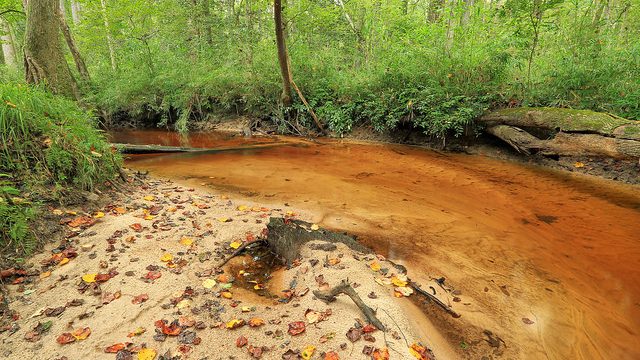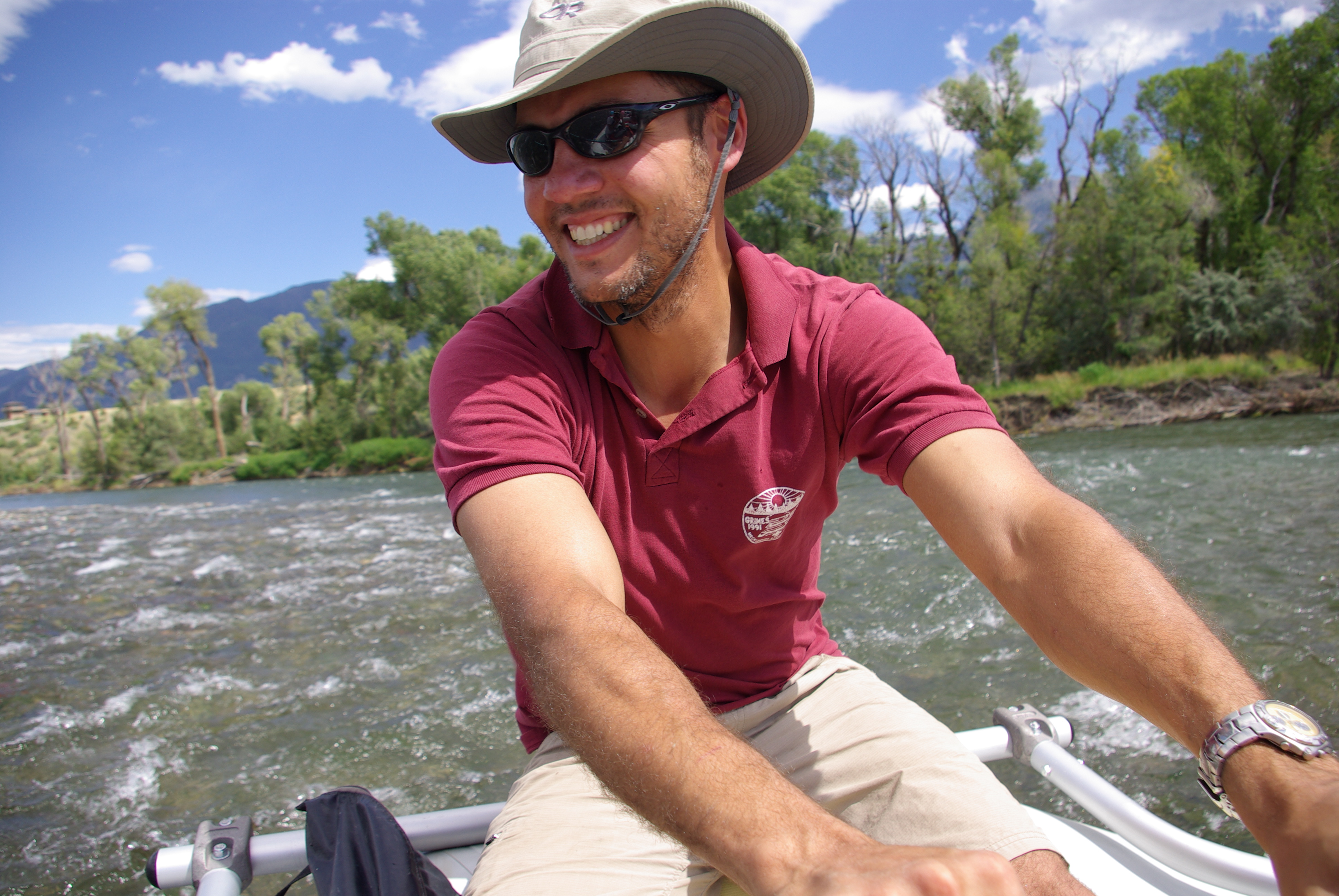Climate Adaptation Planning Stronger with Multiple Ways of Knowing


For centuries indigenous peoples and communities in the United States have relied on natural resources to sustain their families, communities, traditional ways of life, and cultural identities. These important ongoing relationships with both land and water ecosystems make indigenous peoples and cultures particularly vulnerable to the impacts of climate change.
The DOI Climate Science Centers (CSCs) work with tribes and indigenous communities to better understand their specific vulnerabilities to climate change and to help build their capacity to adapt to these impacts. This work is conducted through research projects, outreach events, training workshops, partnership meetings, youth internships, and other coordination activities. Direction for this engagement is detailed in Secretarial Order 3289, Section 5. The DOI CSCs follow “Guidelines for Considering Traditional Knowledges in Climate Change Initiatives” when partnering directly with tribal and indigenous communities and through formal government-to-government consultations. This is done to protect communities from potential risks to indigenous peoples in the U.S. for sharing indigenous knowledges in federal and other non-indigenous climate change initiatives.
Southeast CSC Co-Investigator Ryan Emanuel is deeply engaged in these issues. Emanuel heads a lab at NC State University that focuses on quantifying and exploring the interactions of water, soil, carbon, and energy between landscapes and the atmosphere; he is also an enrolled member of the Lumbee Tribe of North Carolina. He works with Native American communities and students to promote science education and informed decision making in ways that honor indigenous knowledge, culture, and tribal sovereignty.
Recently, Emanuel spoke on the main stage in front of thousands of participants at the March for Science – Raleigh, a sister march to the March for Science in Washington, D.C. His speech focused on the value of indigenous knowledge and the threat climate change poses to losing it. He also shared his experiences on being an environmental scientist while also being a Native American. A reflection and full text from the speech are posted below.
[divider]
[ctt template=”3″ link=”Xzul3″ via=”no” ]Ryan Emanuel on the value of multiple ways of knowing and climate adaptation. #indigenousknowledge[/ctt]
[divider]
Ryan Emanuel’s March for Science – Raleigh Speech Reflection:
I had an opportunity to speak on the main stage at Raleigh’s March for Science, a sister event to the March for Science held the same day (April 22, 2017) in Washington, DC. At this point in my professional career, I’ve given several larger talks aimed at the general public. But this speech was unlike any of those presentations. Instead of recasting my scientific research in publicly accessible language and imagery (which is what I normally try to do), I started from scratch and gave a speech that was really a commentary on science as I’ve come to see it in my various roles as student, educator, practitioner, discoverer, and part of the environment.
From the outset, Raleigh’s march aimed to include diverse voices and perspectives. I framed my speech around the cultural landscapes of American Indian tribes in eastern North Carolina, and around the place-based knowledge that connects people to their landscapes. As a member of one of these tribes (Lumbee), and as a scientist who interacts regularly with some of these tribes, I welcomed the opportunity to add my perspective to the march. Indigenous perspectives and ways of knowing are highly relevant to the great challenges of our time, especially sustainability and the environment. By sharing my perspective, I also hoped to help break some of the stereotypes of science as a faceless pursuit, wholly in the purview of western institutions.
I used a timely example to help the audience (mainly scientists and lovers-of-science) better understand the role of cultural landscapes in preserving and furthering place-based knowledge held by American Indian communities. I selected the Federal Energy Regulatory Commission’s environmental review of the Atlantic Coast Pipeline to highlight the interconnectedness of important issues related to energy, climate change, environmental justice, and the sovereignty of indigenous peoples. Disentangling and addressing such issues will require scientific rigor, but it will also require creativity, empathy, respect, passion, and humility. All of these qualities belong in our still-imperfect toolkit. There is still much more to say and write on these topics, but I hope the text from my speech serves as a brief introduction.
[divider]
Ryan Emanuel’s March for Science – Raleigh Speech
The land where you and I are standing is sacred, and I want to take a couple of minutes to unpack this idea. The place that we now call North Carolina was carved from the territories of indigenous peoples who owned and cared for this land for thousands of years. The American Indians of North Carolina today are the descendants of these peoples, honoring the legacy of their ancestors by carrying forward the knowledge and, yes, the science that has been passed down through generations. Indeed, indigenous peoples were North Carolina’s first scientists. They studied the world around them, developing, practicing and refining many disciplines, including agriculture, zoology, sustainable development, and medicine. These indigenous scientists passed on a body of knowledge that might be summarized by the following concept: individuals, communities, and the environment are completely interdependent. The wellbeing of one of these depends on the wellbeing of all.
My own people, the Lumbee, believe that our river and its adjoining wetlands are sacred. Our river rises in the pine forests of the North Carolina Sandhills before its smooth, dark waters spill out into the coastal plain, where they are flanked by wide, forested floodplains. Our river sheltered and protected us in times of need; its wetlands long sustained us with food and medicine. Lumbee people have long studied the seasons and rhythms of the river, and we have come both to love and respect it, knowing that it has the capacity to destroy as well as sustain, as witnessed in the dramatic flooding that followed Hurricane Matthew last fall. We are Lumbee people because of our river, which is to say that our culture and our indigenous science are inextricably wrapped up in a deep, place-based knowledge of our land and water. In fact, a hallmark of indigenous science throughout the world is this deep, place-based understanding of the interdependencies between people and the environment.
Western science has only recently begun grappling with the interconnections between humans and nature that have been central to indigenous science for hundreds or, in some cases, thousands of years. Western scientists use technical phrases like “the dynamics of coupled human and natural systems” and “socio-ecological systems” to describe the kinds of relationships between people and the environment that the Lumbee and other indigenous peoples have understood for generations. I am allowed to make this observation, because I am also a western scientist. My academic training focused on the interface of ecology, hydrology, atmospheric science, and geoscience. I’ve spent the past ten years building an academic research group that studies pressing environmental issues while training future generations of environmental problem solvers and scientifically literate citizens. As a person who walks in both worlds, the world of western science and the world of indigenous knowledge, I’ve come to recognize and respect how these two ways of knowing complement one another.
Unfortunately, indigenous knowledge is at risk of being lost. Because indigenous knowledge is based on deep understanding of specific kinds of environments and particular places, it can be lost if those places are destroyed, altered by climate or land cover change, or if indigenous peoples are forced to abandon their long-held territories. This is one of the things that motivates my work with indigenous communities here in North Carolina. Land use change, shifting agricultural practices, and other environmental changes can impact tribes’ abilities to practice and sustain their culture and pass indigenous knowledge to future generations. I want tribes to be empowered with datasets, analytical expertise, and other resources needed to evaluate and deal with the environmental risks that threaten their cultural knowledge. This is one of the ways that western science complements indigenous science. I also want tribes and indigenous peoples to have a voice when it comes to decisions about the landscapes that make up their traditional territories.
This is why I chose to speak out about a recent environmental impact statement, prepared by federal regulators, that claimed a proposed interstate gas pipeline would have no disproportionate impacts on poor or minority communities in North Carolina, including American Indian communities. However, data in the regulators’ own report showed that 30,000 American Indians, one quarter of North Carolina’s indigenous population, lived along the proposed route. Their data also showed that American Indians, who make up just over one percent of the state’s population, constituted more than 13% of the population living along the route. So when regulators concluded no disproportionate impacts, I called foul. Correcting their demographic analyses wasn’t hard for a quantitative scientist, but communicating this information to policy makers, tribal leaders, journalists, and regulators has been difficult and has definitely taken me out of my comfort zone of journal articles and conference presentations. But the work is important because the stakes are high. The people who have the most to lose are also at risk of having no voice in the process. So I will continue to speak up as a scientist who understands both the mathematics and the cultural implications of this problem.
And I hope that you will continue to speak up, too, in whatever way you can and for the people and places that you care about. That you are here today is a testament to your enthusiasm for science and your willingness to take a public stand to show your support. But our work doesn’t end today. I want to leave you with some final words as you consider where to go from here.
In the Lumbee community, we value education. In 1887, my ancestors were given $500 by the State of North Carolina to help establish a school to train our own teachers. The community poured money, sweat equity, and love into that institution, and today it is known as the University of North Carolina at Pembroke. Even though it is a fully public institution today, the university has been a powerful force for preserving and communicating our culture for over a century. Lumbees of my generation know that the university exists because of the efforts of our great, great grandparents –three generations back. We are who we are today because of their hard work. Similarly, we know that our decisions and efforts will impact the next three generations and more. So we use the knowledge of our ancestors to make sure that our descendants know how to live properly in their world. This applies to everyone here. Think about the gifts that your scientific ancestors gave you, and consider how you will use them and pass them on to the next generation. Become good ancestors yourselves.
Thank you.
[divider”]
To watch Ryan Emanuel deliver his speech at the March for Science – Raleigh, click here.
To learn more about Ryan Emanuel’s work you can go to his SE CSC Faculty Affiliate page.
- Categories:
